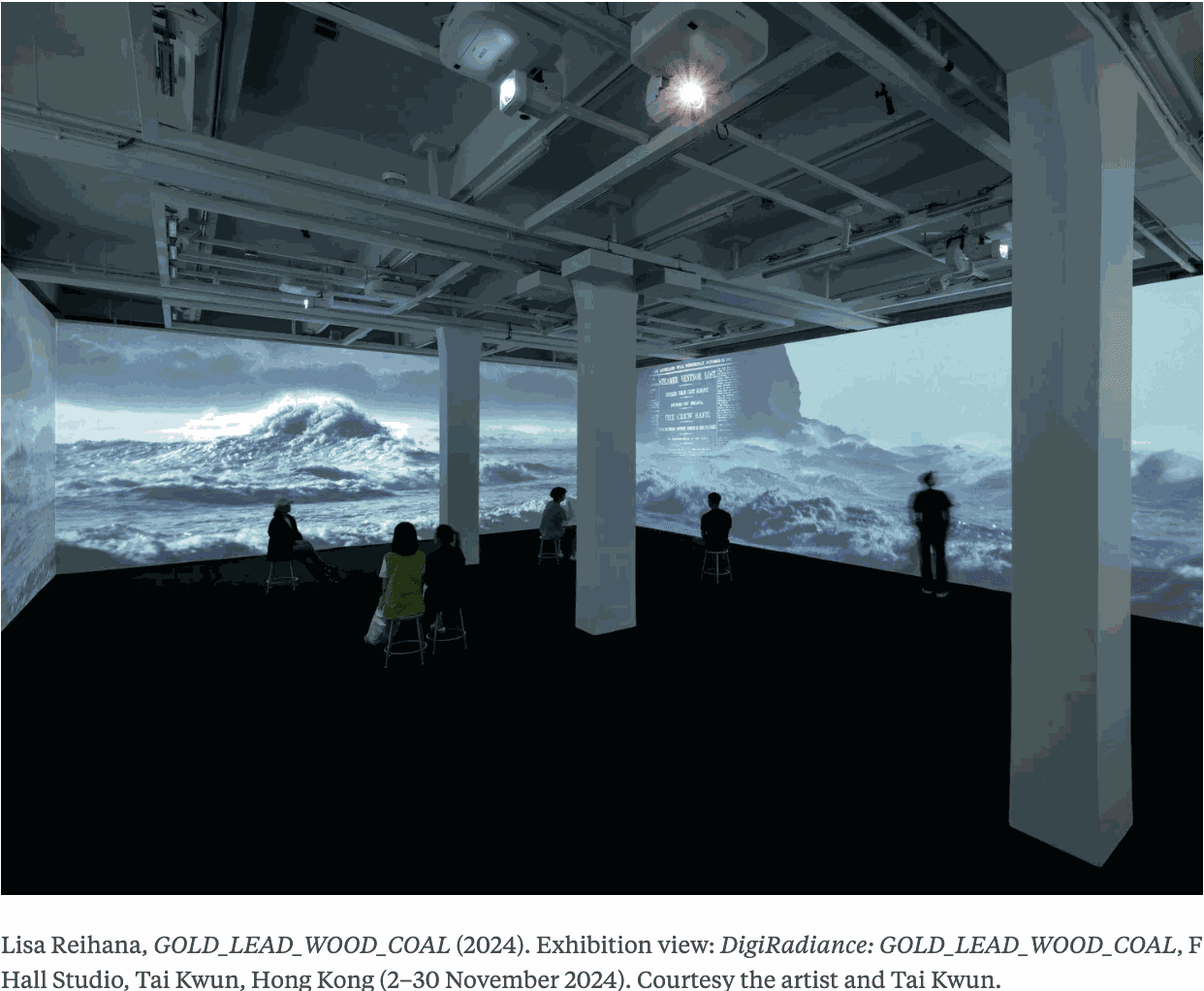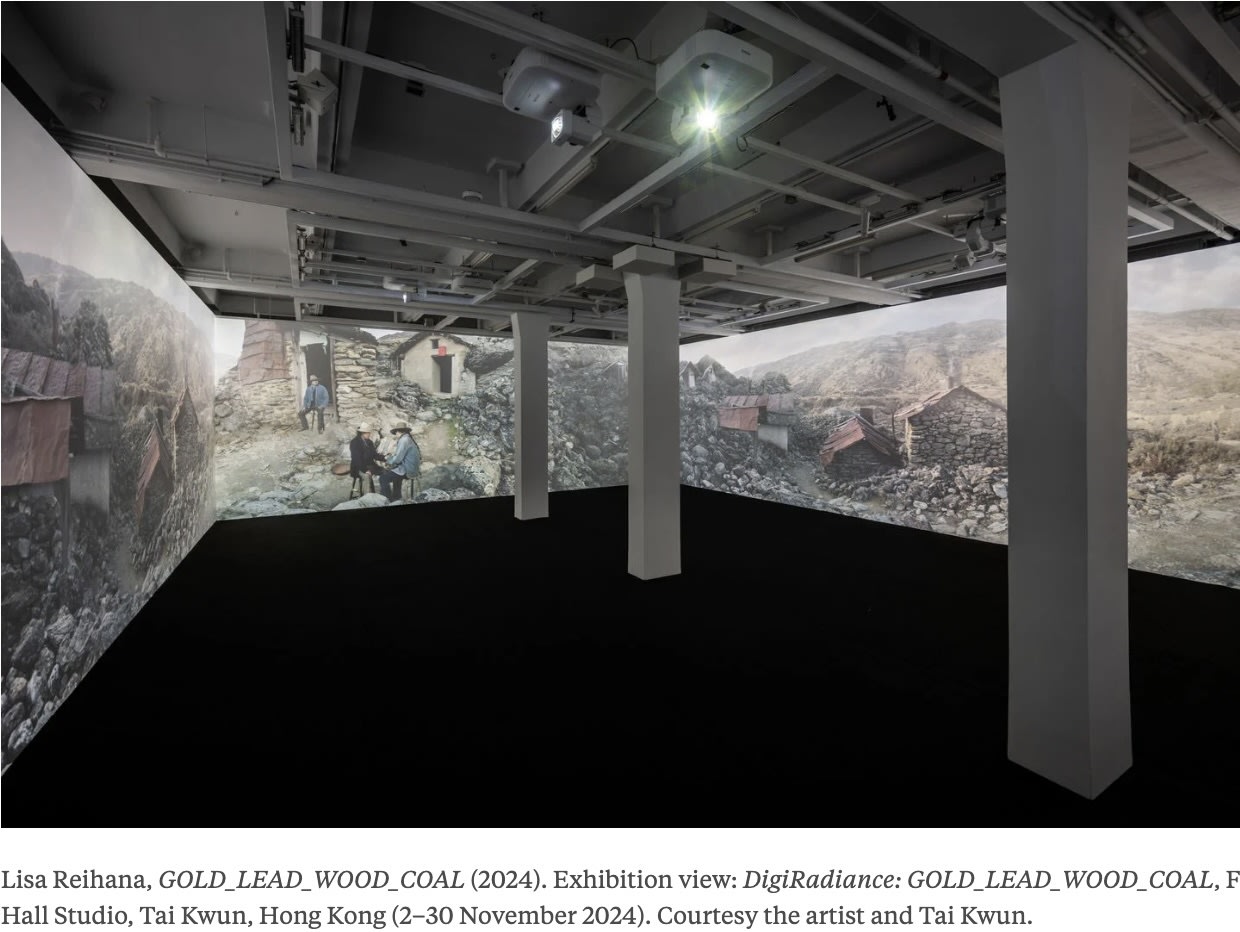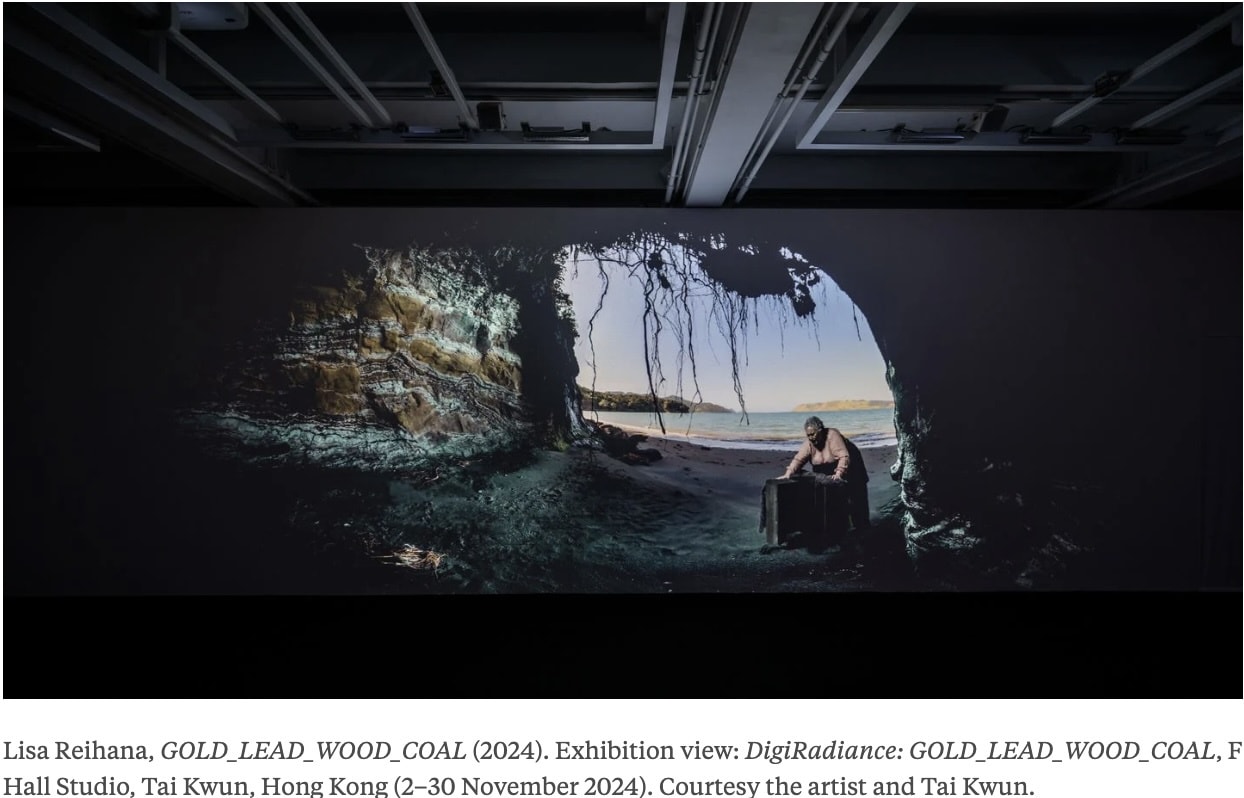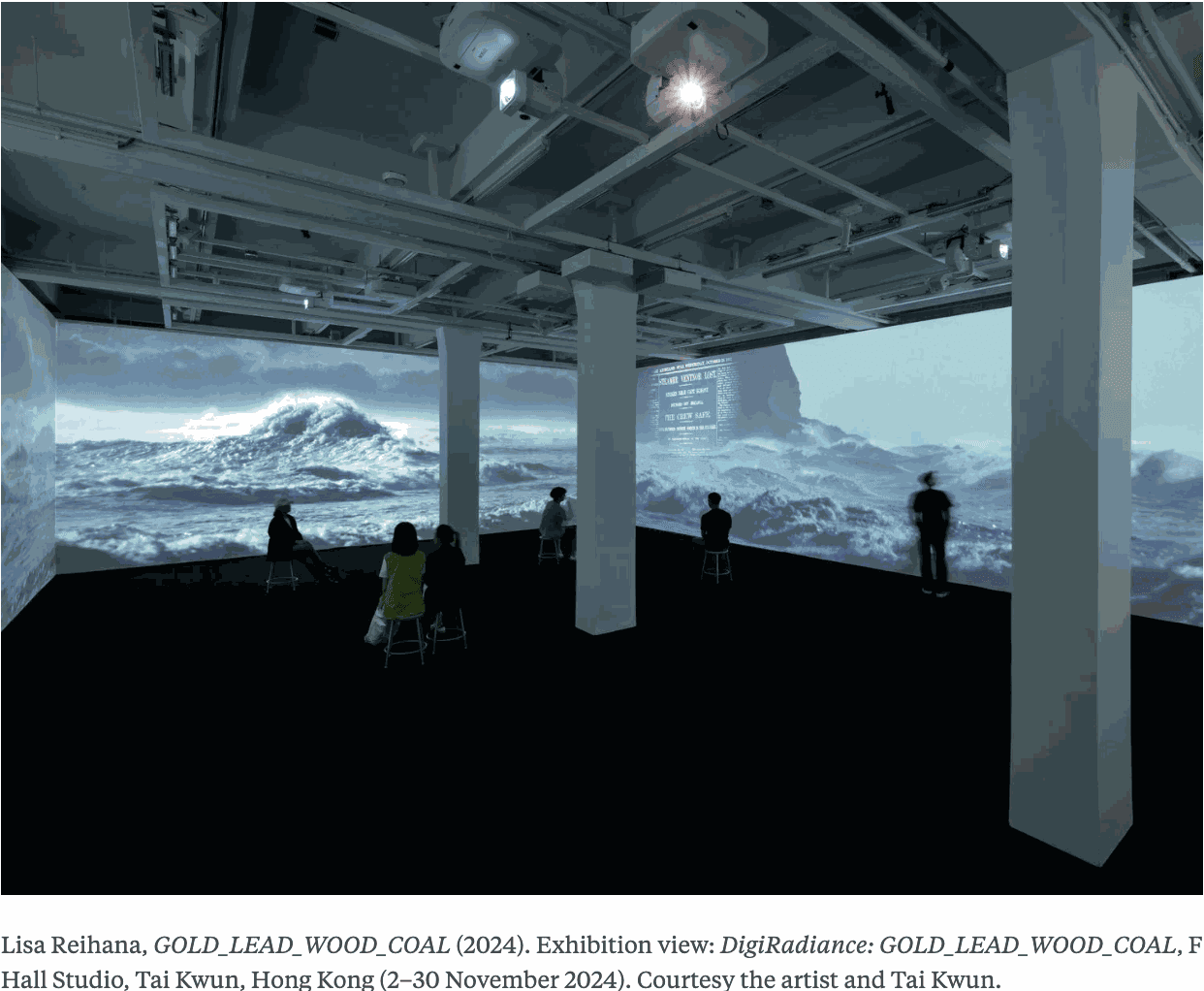There comes a point during Lisa Reihana's immersive digital installation when the viewer feels swallowed up by crashing waves at Tai Kwun and a feeling of anxiety creeps in.

In GOLD_LEAD_WOOD_COAL (2024), presented across all four walls of Tai Kwun's F Hall Studio, Lisa Reihana weaves Aotearoa New Zealand and Hong Kong history together with fiction, connecting the past to the present. The artist takes the tragic story of the British cargo steamship SS Ventnor, wrecked off the coast of New Zealand in 1902, as the starting point to explore themes of foreign labour, migration, displacement, and belonging.

When the SS Ventnor sank, not only did 13 of its crew perish; also lost were the bodies of around 500 Chinese gold miners who had died in New Zealand and were being repatriated to Hong Kong and Guangzhou (previously romanised as Canton) for traditional burial. Told from the perspectives of four fictional characters—a Chinese merchant, a Māori Wahine (woman), a female inmate of Hong Kong's Victoria Gaol, and an Indian prison guard—Reihana fuses Māori and Cantonese traditions and historical references to create a visual journey that traverses seas and countries.

GOLD_LEAD_WOOD_COAL transports viewers from the goldmines of New Zealand's Otago region, where we watch miners panning for gold, to the Baroque interiors of a red-curtained opium den, which dissolves into the tunnels and cells of Victoria Gaol—today the site of Tai Kwun's heritage complex of art galleries and restaurants. Finally, we are confronted by the waves engulfing us, washing ashore coffins and bones that are collected and cared for by a Māori woman.

We witness these events unfold around us through snippets screened on a 15-minute loop, accompanied by an emotionally evocative, mournful soundtrack of chanting and ambient sounds, created by musician and sound engineer James Pinker. Challenging historical colonial narratives, Reihana foregrounds stories of sharing, resilience and care, to spark questions about Hong Kong's own diasporic history and encouraging the audience to reflect on the sacrifices, unspoken tragedies, and traumas that are all too often part of the migrant story. —[O]


